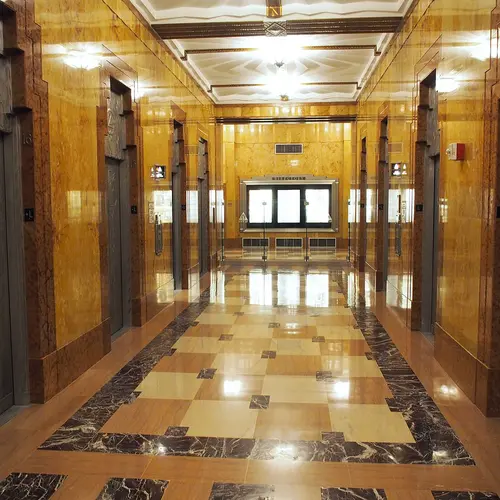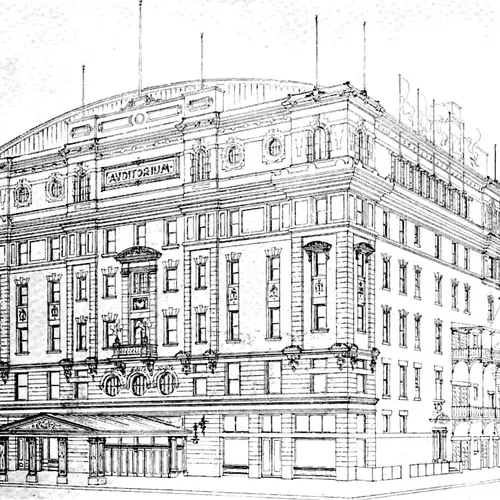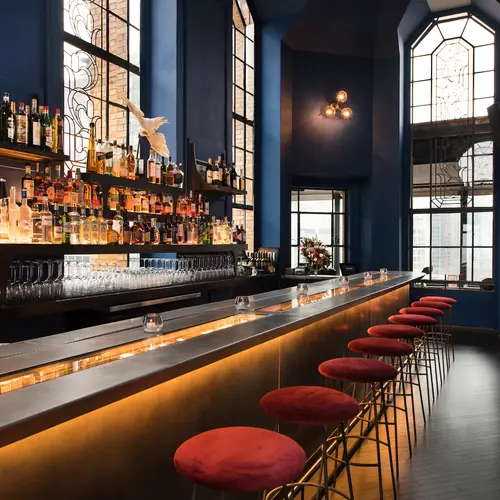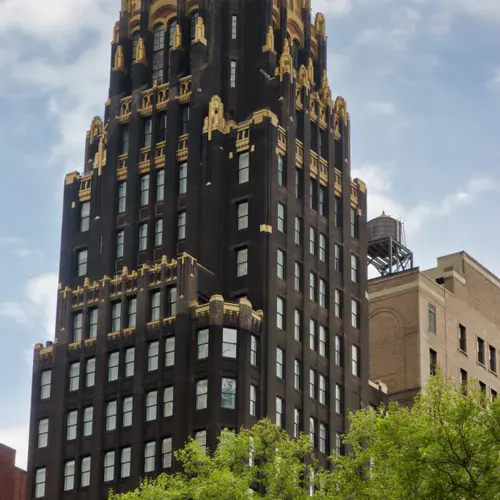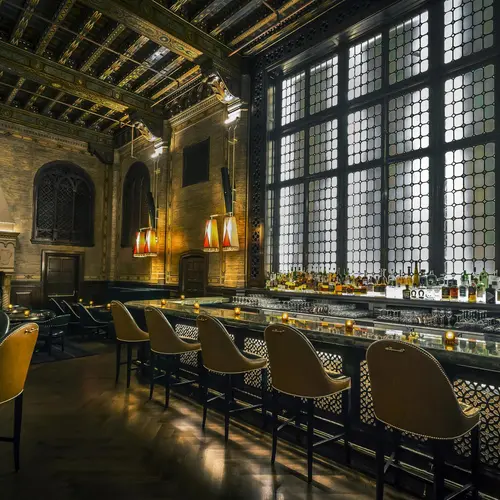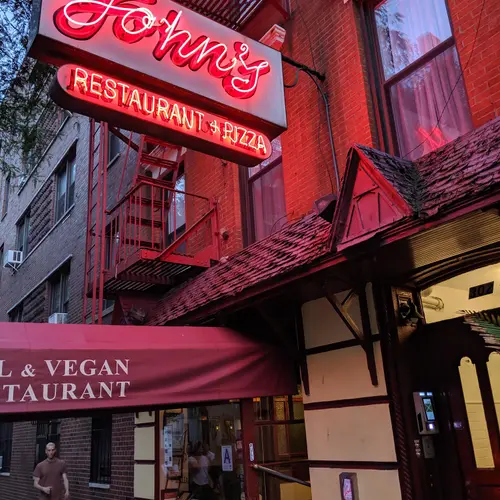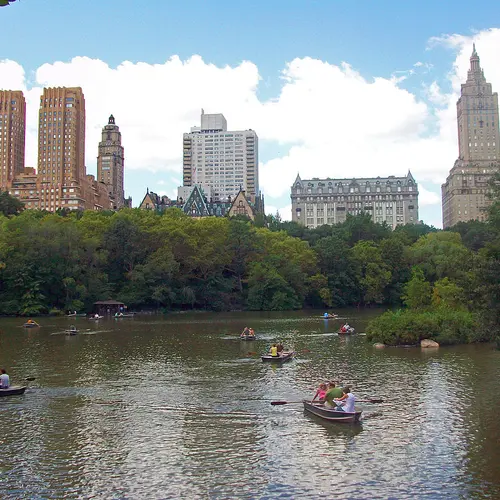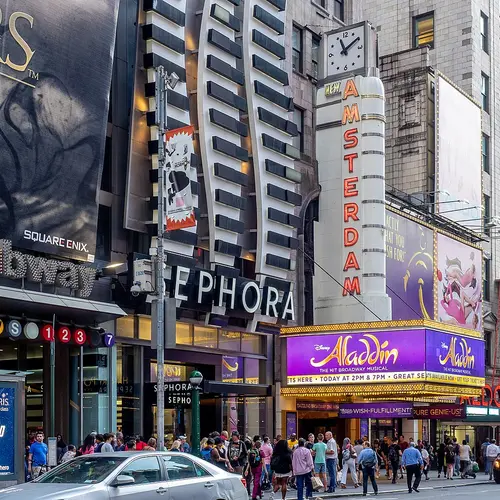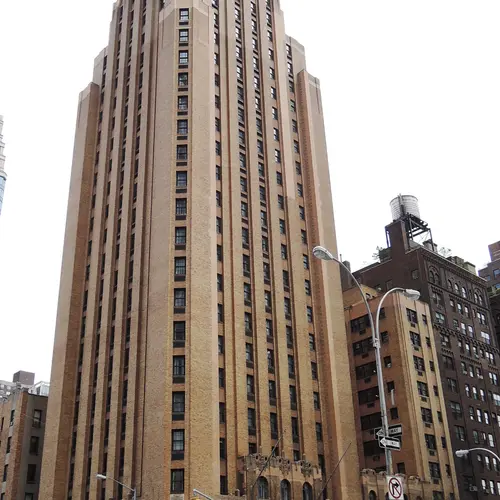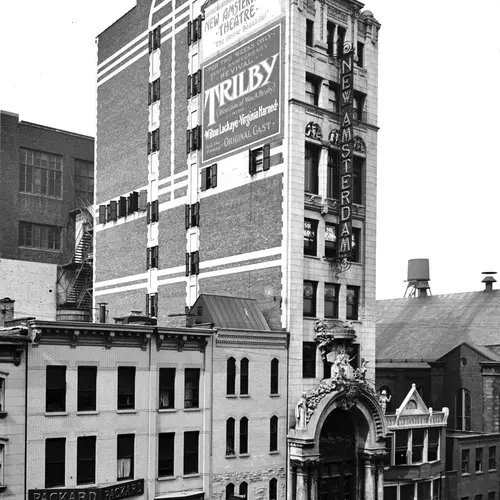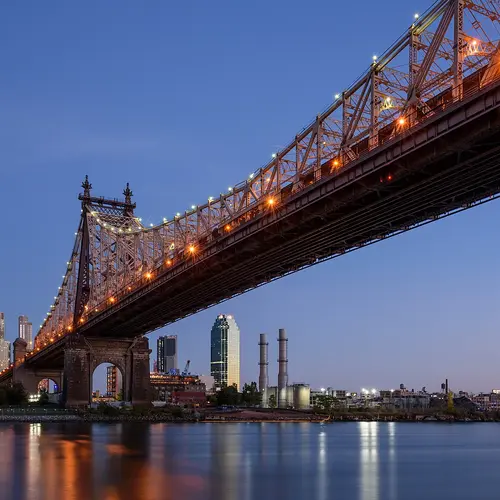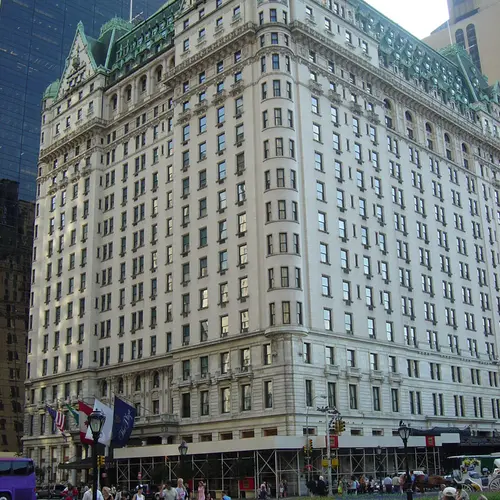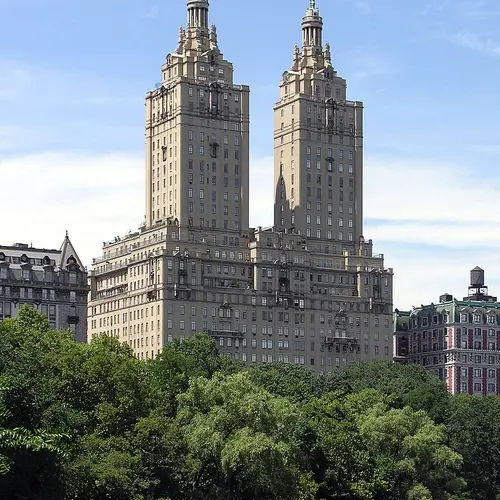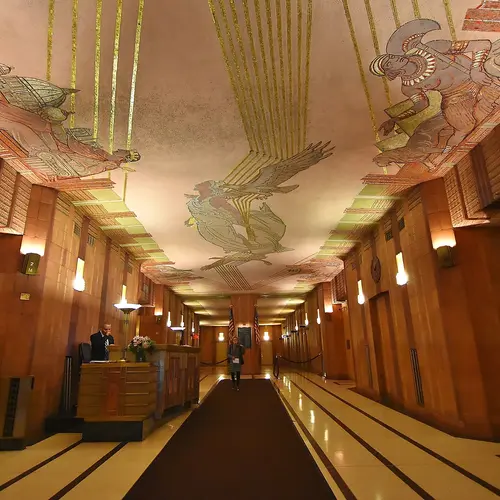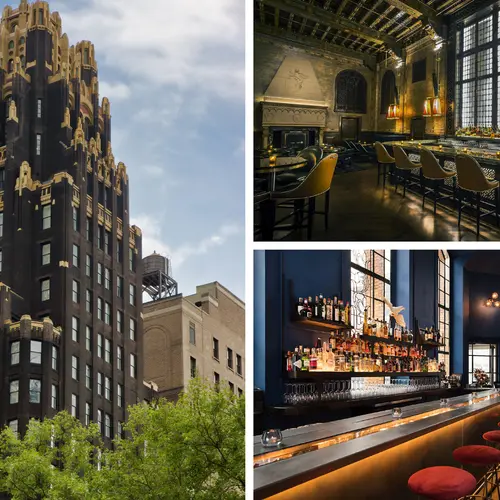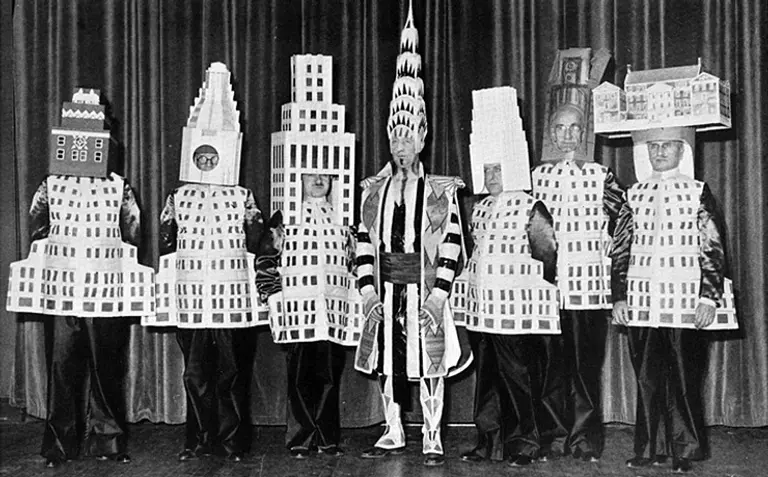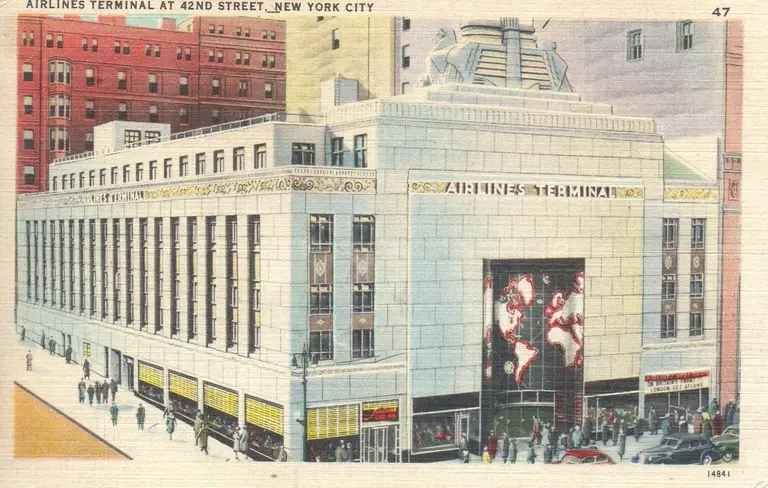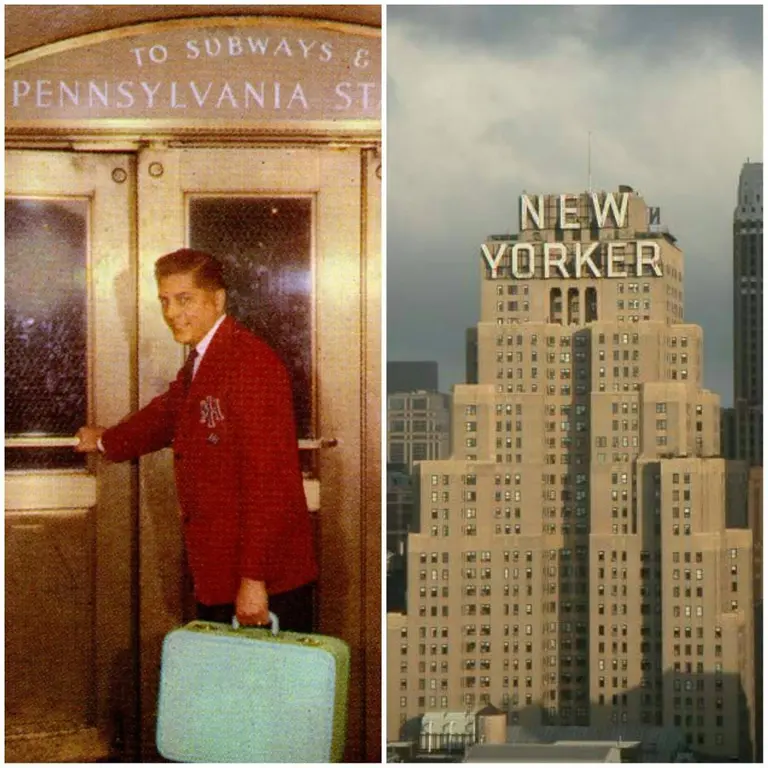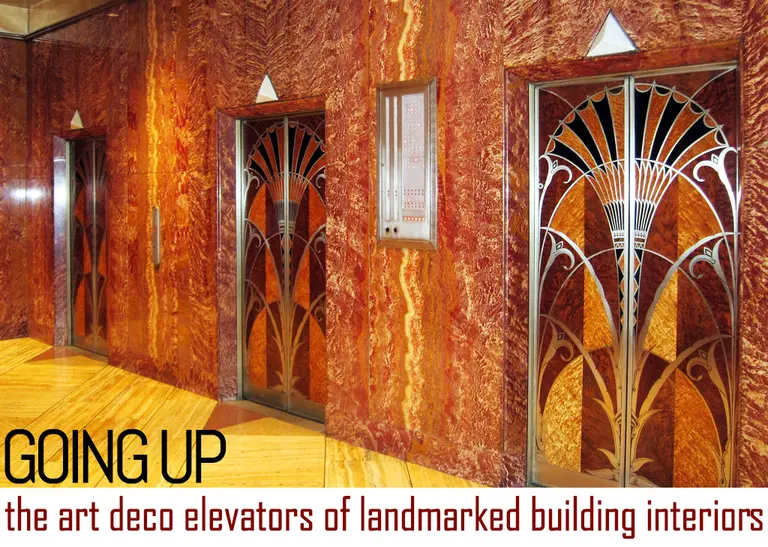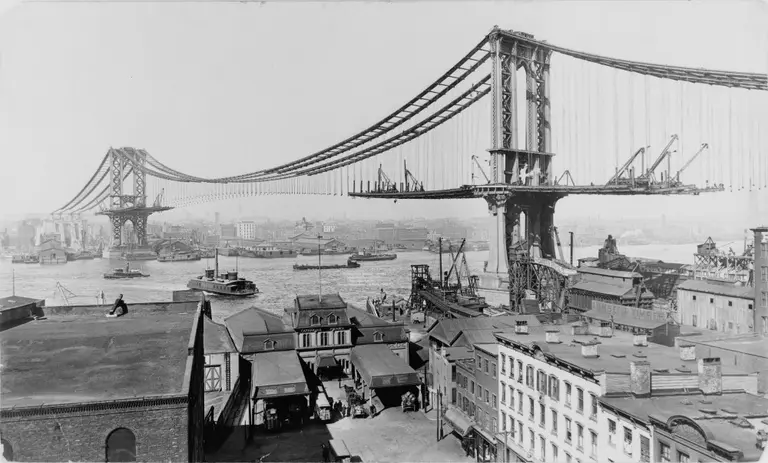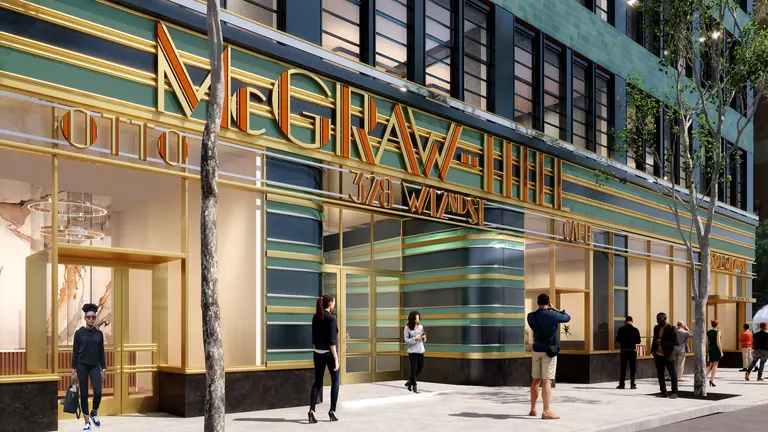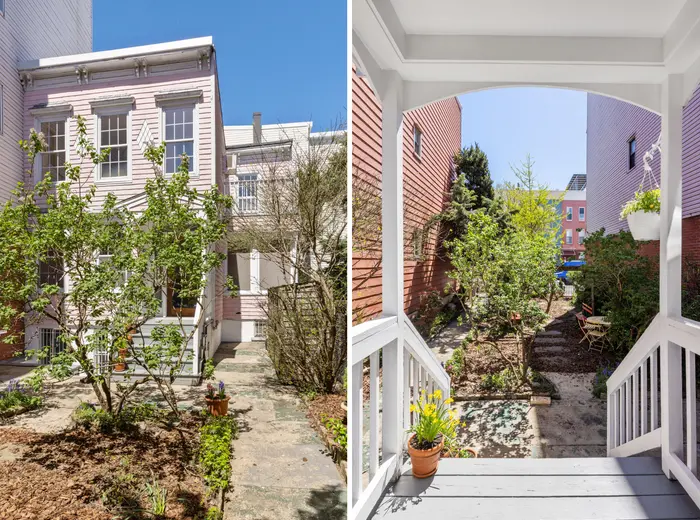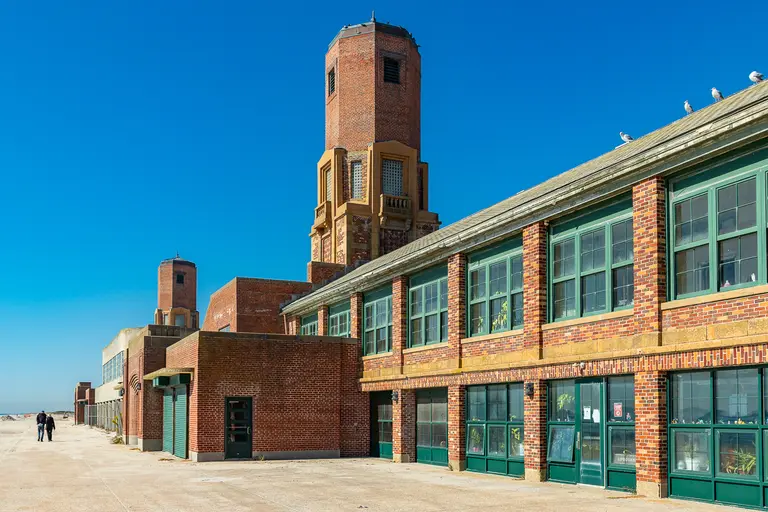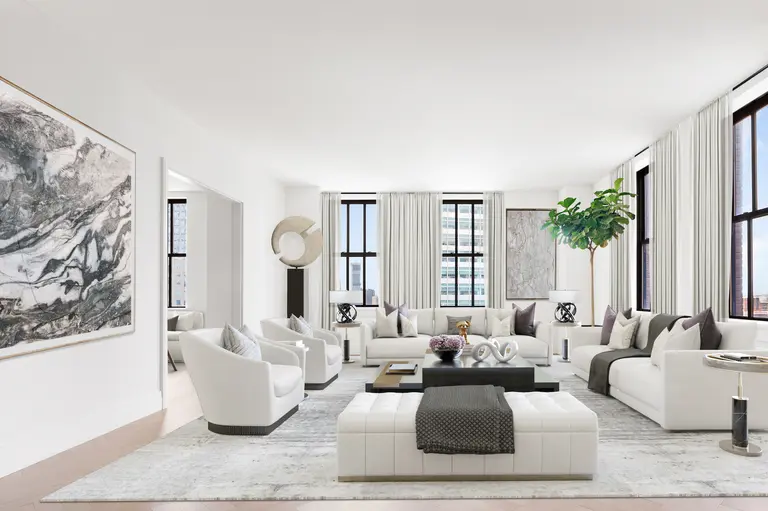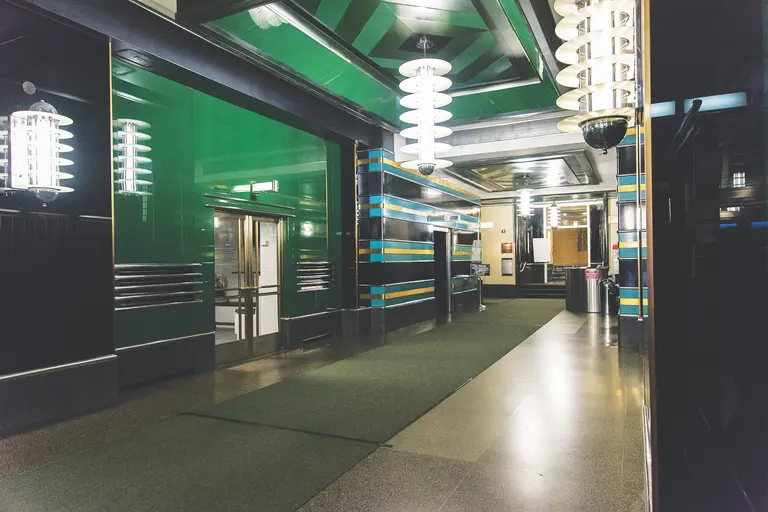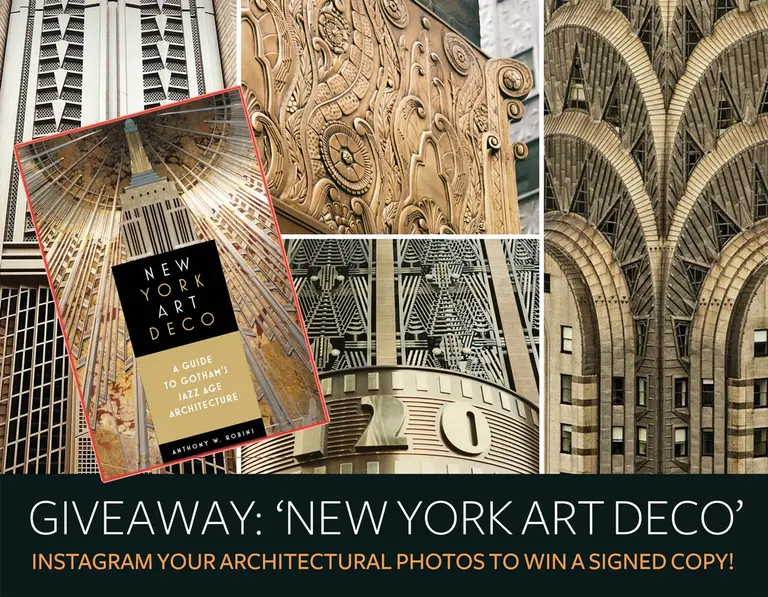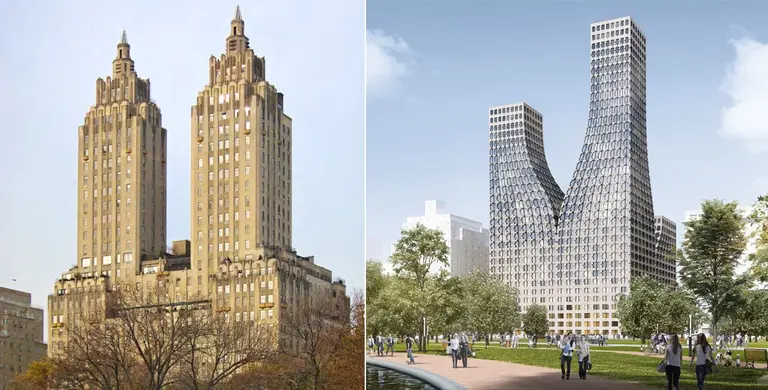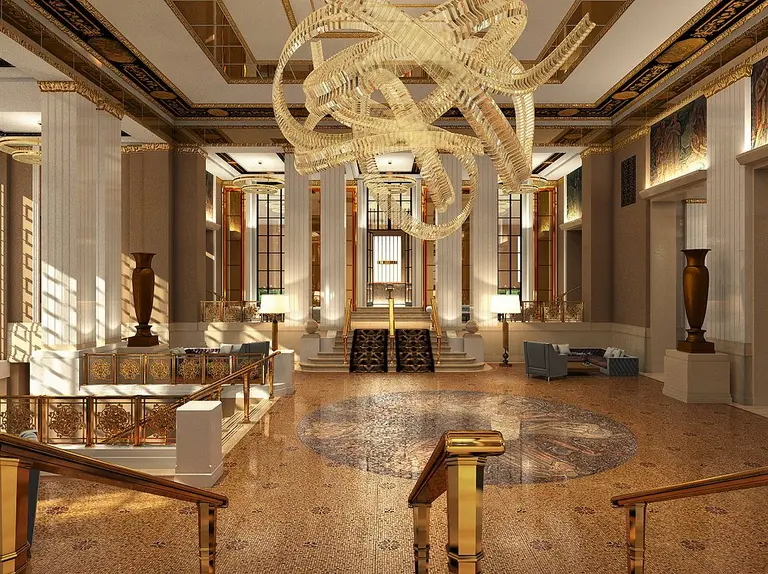Travel back to the Roaring Twenties at these 10 NYC spots
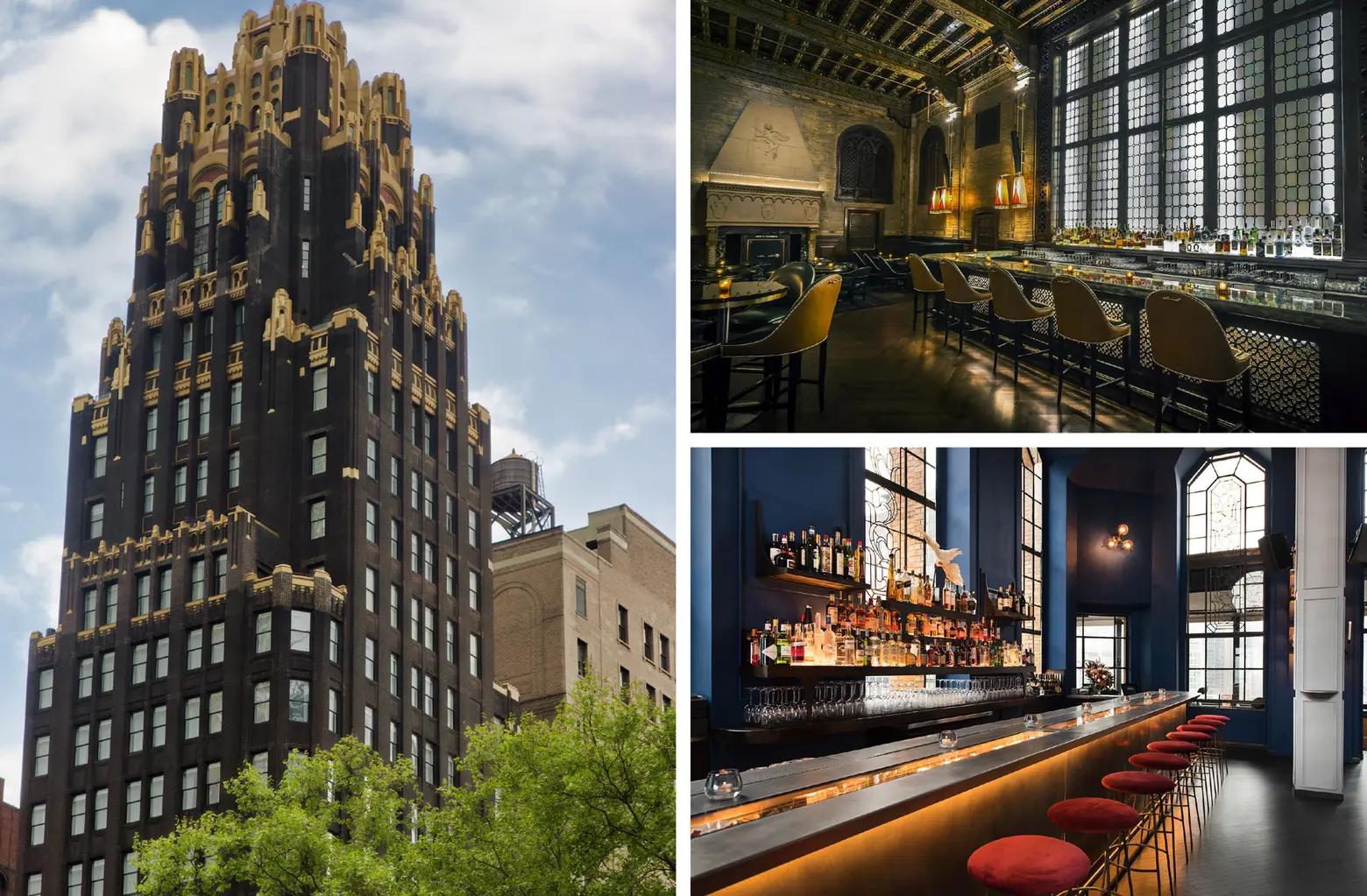
Recently, 6sqft brought you 20 fascinating photos of New York in the ’20s, and now, we invite you to celebrate the new decade by following in the footsteps of the fanciest flappers in the five boroughs. Ahead, check out 10 places in NYC today to relive the Roaring Twenties. On this list, you’ll find theaters, bars, and hotels; Art Deco masterpieces; addresses favored by the Follies and Fitzgerald; and at least one spot where New York offers up “its first wild promise of all the mystery and the beauty in the world.”
1. Beekman Tower
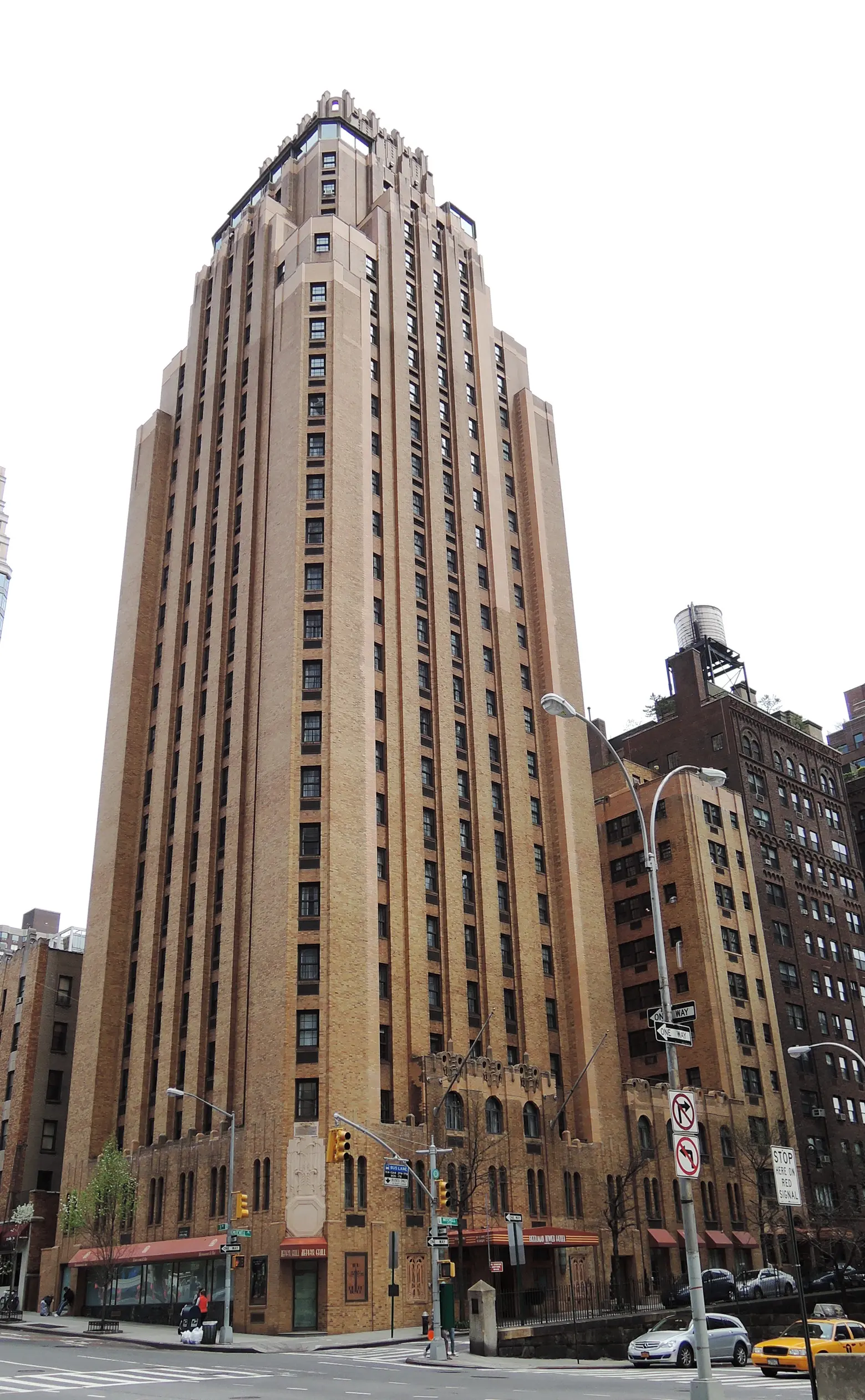
The Beekman, 2013, by Jim.henderson via Wikimedia Commons
Built in 1928, this 26-story Art Deco skyscraper near 49th Street by the East River was originally known as the Panhellenic Tower because it opened as a women’s-only club and hotel for members of national sororities. It was designed by the architect John Mead Howells, who also designed the Daily News Building on 42nd Street, Memorial Hall at Pratt, and the Tribune Building in Chicago. The building also features Art Deco sculpture by Rene Paul Chambellan, who’s work you can see at Rockefeller Center.
Panhellenic went co-ed in 1934 when membership declined during the Depression, and it was rebranded as Beekman Tower. In 1964, investors bought the building and turned it into The Beekman Hotel, which was popular with those from the nearby United Nations. The hotel had a rooftop bar called “Top of the Tower” that was a favorite of Frank Sinatra, Miles Davis, and Frank Zappa.
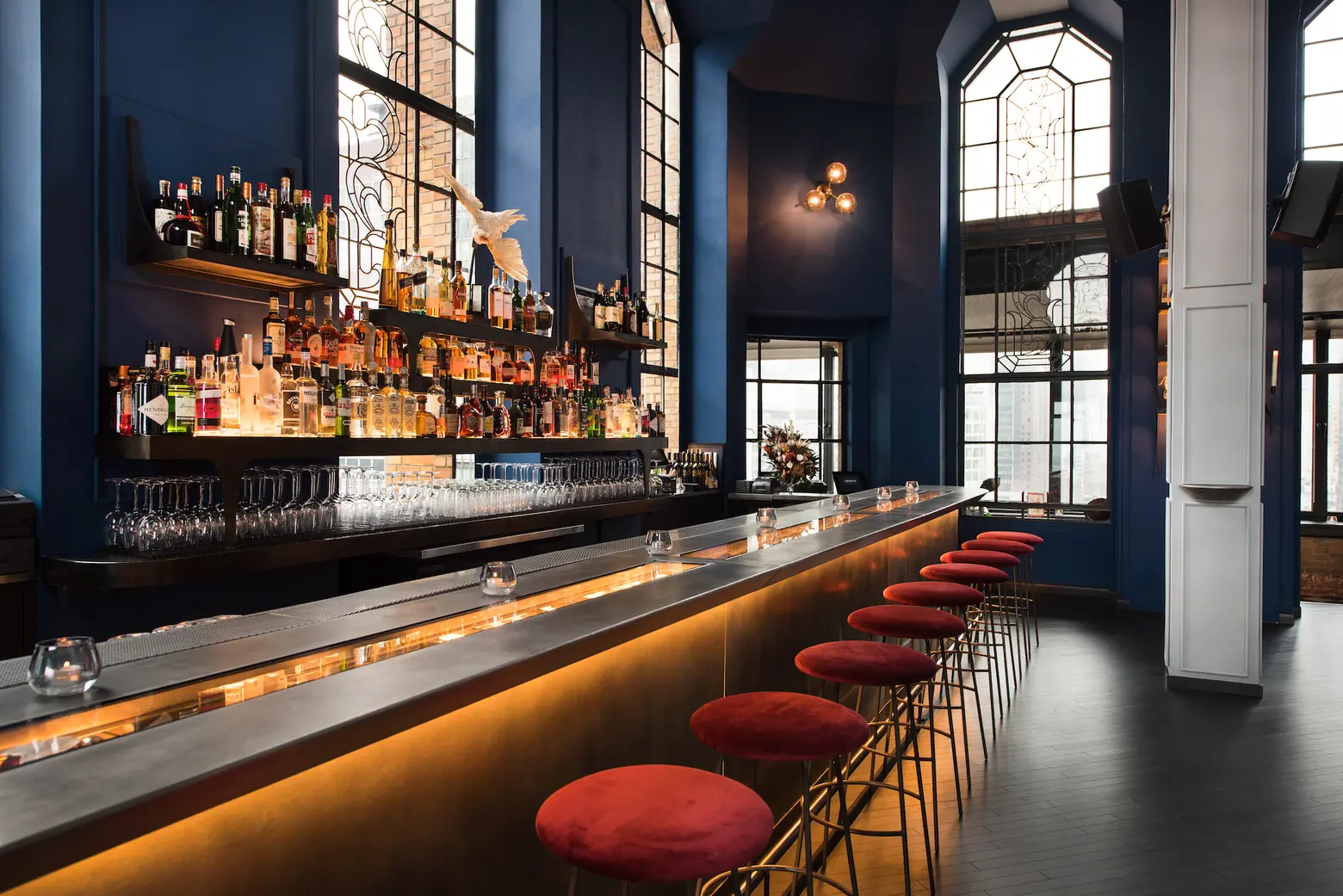 Photo courtesy of Ophelia
Photo courtesy of Ophelia
In 2016, the building was converted to rentals and regained its name Beekman Tower, and in 2018, a swanky lounge called Ophelia opened in the rooftop space. It nods to its Art Deco roots with jewel-toned walls and decor, etched glass windows, and speakeasy-style cocktails.
2. Bryant Park Hotel
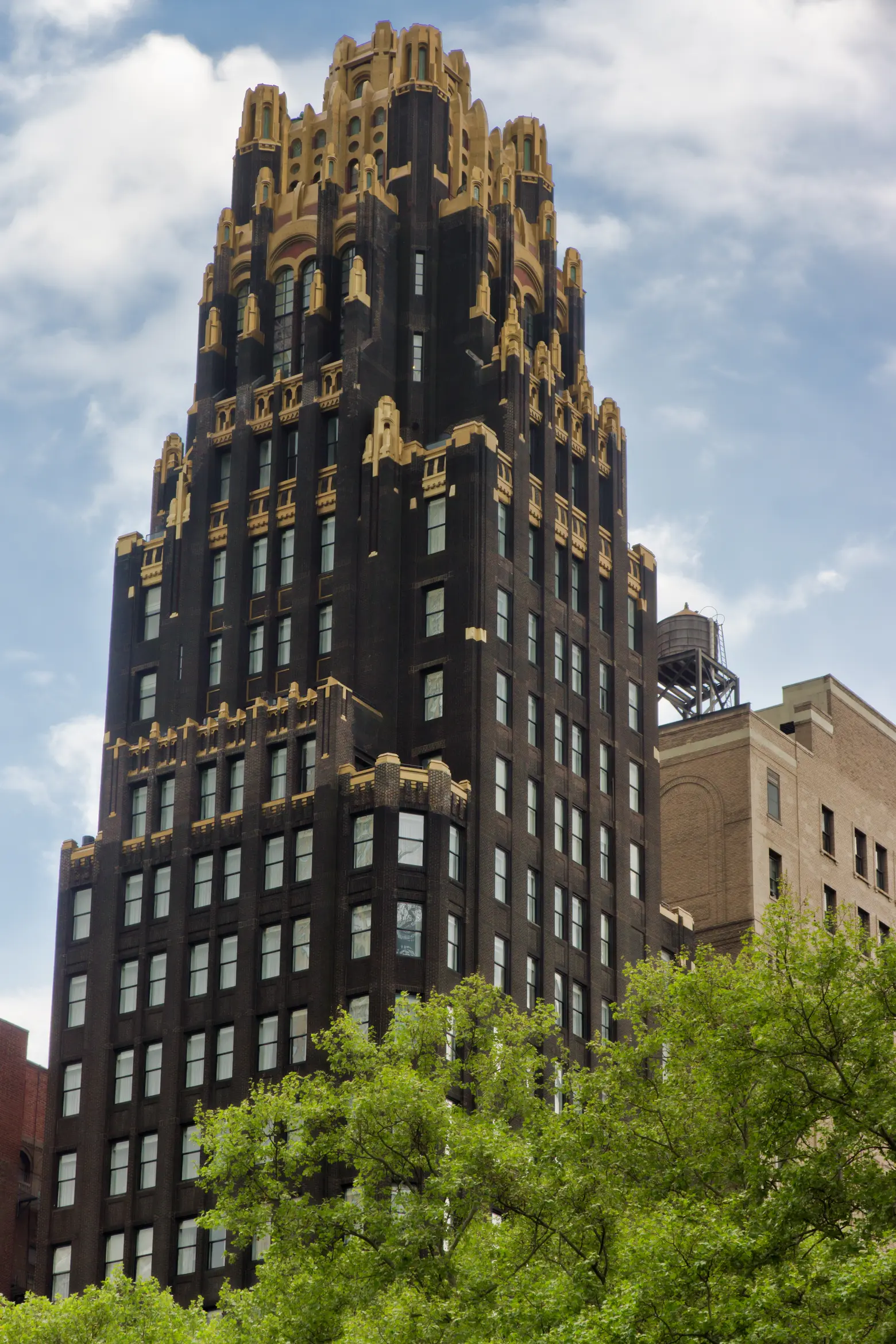 Photo by Jean-Christophe BENOIST via Wikimedia Commons
Photo by Jean-Christophe BENOIST via Wikimedia Commons
The landmarked building at 40 West 40th Street was built in 1924 as the American Radiator Building (later American Standard). It was designed by Raymond Hood, the visionary architect behind Rockefeller Center and Chicago’s famous Tribune Tower. Its striking black and gold motifs are said to represent glowing coal, which fueled the Radiator Company’s primary product. It was the first skyscraper in NYC to use dramatic exterior lighting, and those floodlights were so iconic, they were featured in Georgia O’Keeffe’s 1927 painting, “Radiator Building – Night, New York.”
The building became the Bryant Park Hotel in 2001, but you don’t have to be a guest at the hotel to enjoy its gilded age glamour; there’s the Célon Cocktail Bar & Lounge, as well as an outpost of popular Japanese restaurant Koi.
3. Campbell Bar
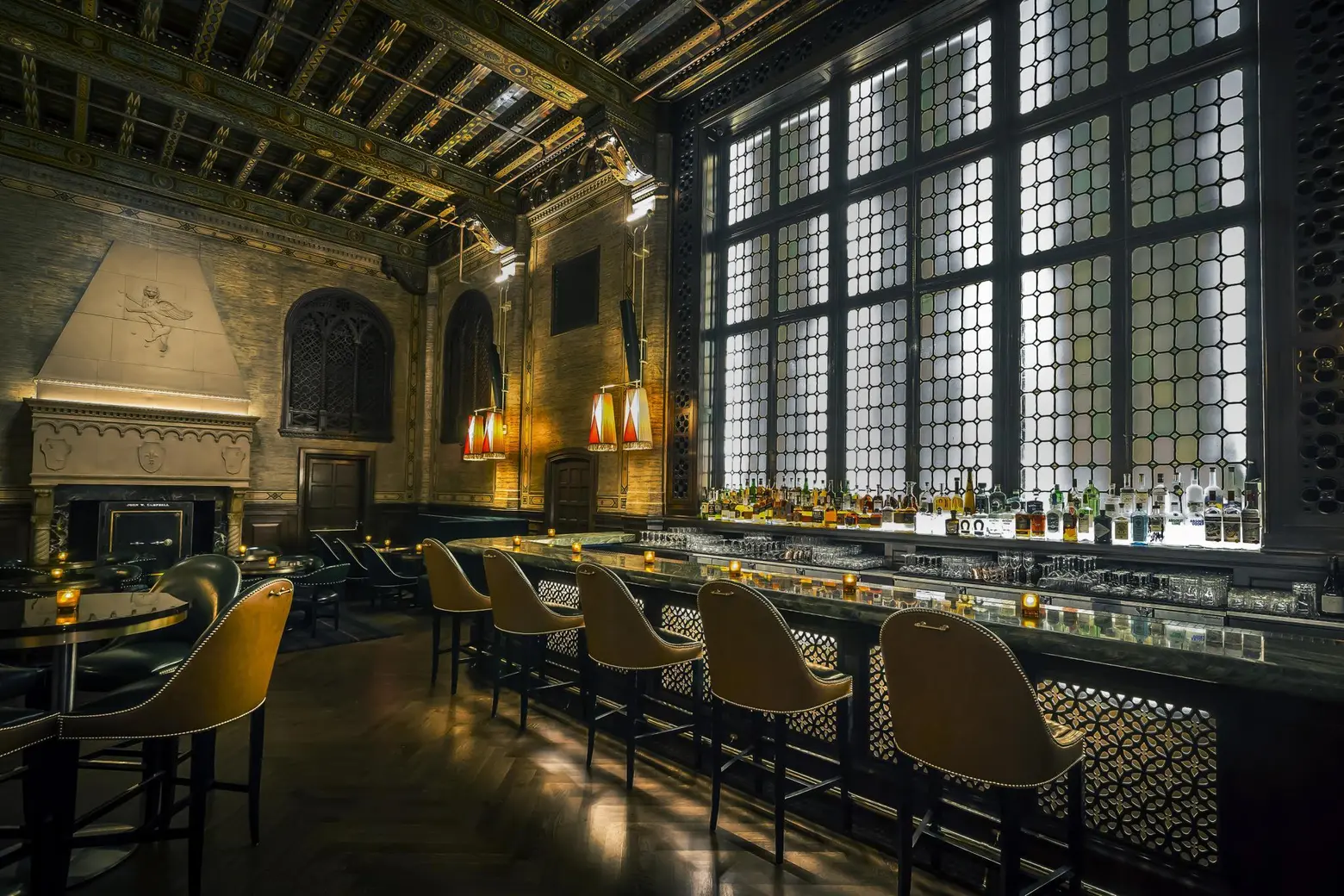 Photo courtesy of the Campbell Bar
Photo courtesy of the Campbell Bar
Another cozy-cool place to get your Jazz Age drink on is the Campbell Bar. Long known as the Campbell Apartment (it got a new owner and a new name in 2017), the bar is tucked away inside Grand Central. The stunning room “was first rented out in 1923 by William Kissam Vanderbilt II, whose family built the terminal. It was once the ornate private office of early 20th-century railroad exec and financier John Williams Campbell, and later a studio for CBS Radio and a jail used by Metro-North Railroad,” as 6sqft previously explained.
When the Gerber Group took the bar over in 2017, they got rid of the dress code, hoping to make it more inclusive and casual, but they were sure to retain all of the Florentine details like coffered ceilings, leaded glass windows, and an oversized fireplace. They’ve also kept all the classics on the cocktail menu, as well as some more creative offerings.
4. John’s of 12th Street
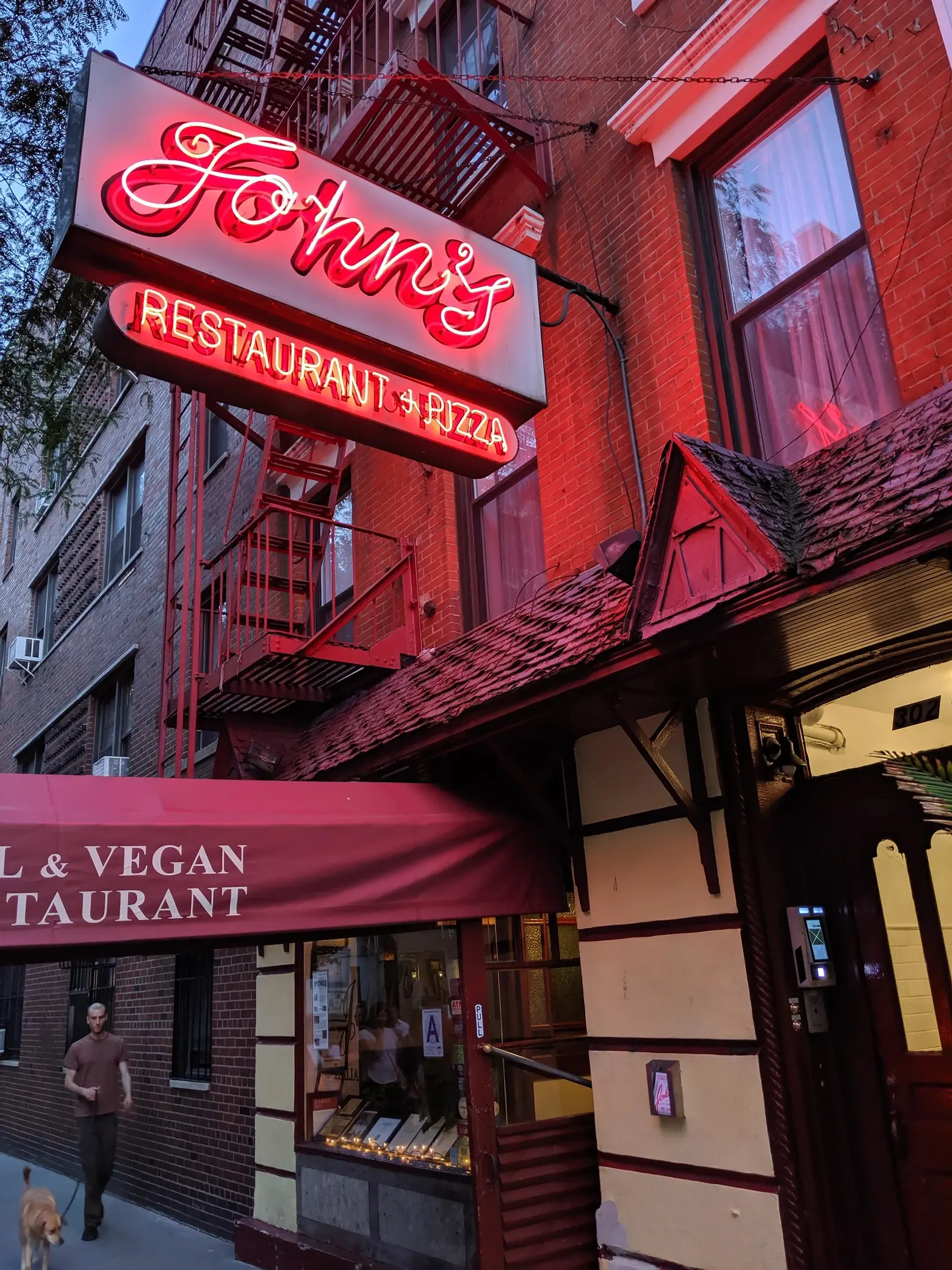 Photo by Eden, Janine and Jim via Flickr cc
Photo by Eden, Janine and Jim via Flickr cc
The term “speakeasy” today does not always connotate an actual speakeasy, but rather a “hidden” bar.” But there are definitely some historic survivors, and one of the most fun is John’s of 12th Street. The East Village Italian restaurant opened in 1908 by Italian immigrant John Pucciatti and grew to be a favorite hangout for mobster Lucky Luciano who lived around the corner. It was immortalized in mob history in 1922 when Guiseppe “Joe the Boss” Messeria, the then head of the Genovese crime family, called Rocco Valenti of the Morella crime family to John’s for a peace offering. When Valenti left the restaurant he was followed to the corner and killed by two unknown men who many believe were Lucky Luciano and Vito Genovese.
John’s also operated as a well-known speakeasy during prohibition. The ground floor continued as a restaurant, while wine and whiskey were made in the basement and served in espresso cups on the second floor. When Prohibition ended, the staff created a giant candelabra atop wine bottles in celebration. This same fixture is still lit today in the back of the restaurant, and the staff regularly has to shave down the wax. Though the owners have changed over the years, John’s still serves some good old fashioned Italian cuisine and retains almost all of its historic interiors, including the mosaic-tiled floors, the leather banquettes, and the oil murals on the wall that depict scenes of Italy.
5. The Plaza

Photo via Pixabay
The Plaza opened in 1907, but during the Jazz Age, it was a favorite spot of F. Scott Fitzgerald, perhaps the most famous character of the roaring ’20s, and his wife Zelda. The pair drank, ate, stayed, and even frolicked in the fountain at the Plaza. The hotel also figures prominently in Fitzgerald’s 1925 novel The Great Gatsby; in chapter seven, Gatsby, Daisy, Nick, Jordan, and Tom all decide to take a jaunt into the city and rent a suite at the Plaza, with one of the most dramatic scenes unfolding here. When Baz Luhrmann’s movie remake came out in 2013, the Plaza even created the Fitzgerald Suite, designed in Jazz Age fashion by the film’s set designer. If paying over $2,000 a night is not your thing, you can still get your Gatsby on by having a drink at the Champagne Bar, making a reservation for high tea at the Palm Court, or checking out the food hall in the basement.
6. The Queensboro Bridge
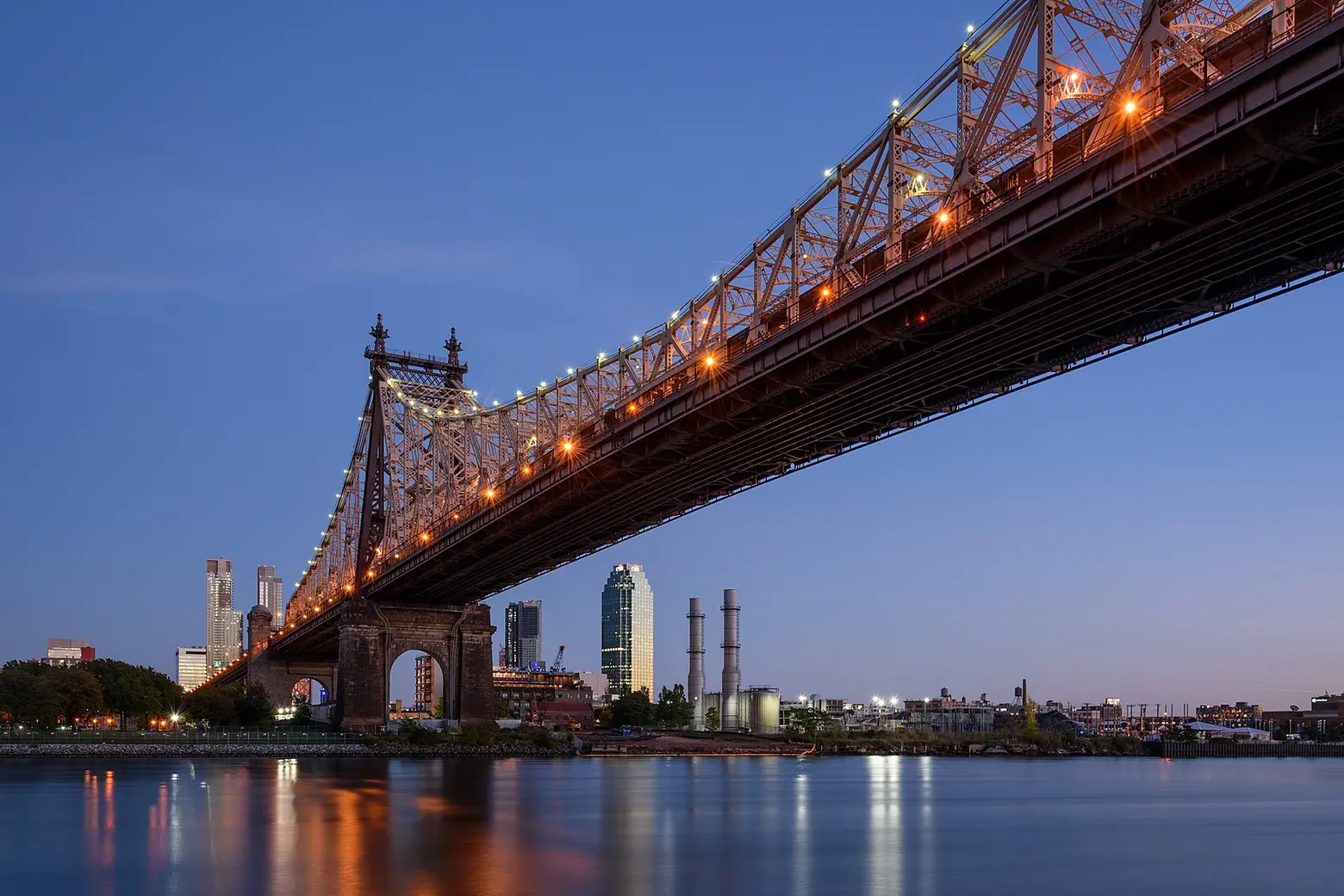 The Queensboro Bridge, 2016, by King of Hearts, via Wikimedia Commons
The Queensboro Bridge, 2016, by King of Hearts, via Wikimedia Commons
Speaking of The Great Gatsby, that book gives us one of the most beautiful descriptions of New York City, via one of its least hallowed spans: “The city seen from the Queensboro Bridge is always the city seen for the first time, in its first wild promise of all the mystery and the beauty in the world.” If you think the city still makes that wild promise, make your way across the bridge, and see the city as Fitzgerald saw it.
The Queensboro Bridge was built in 1909, but one of the ’20s most major infrastructure projects was the Holland Tunnel, which opened in 1927 as the longest underwater vehicular tunnel in the entire world.
7. Central Park West
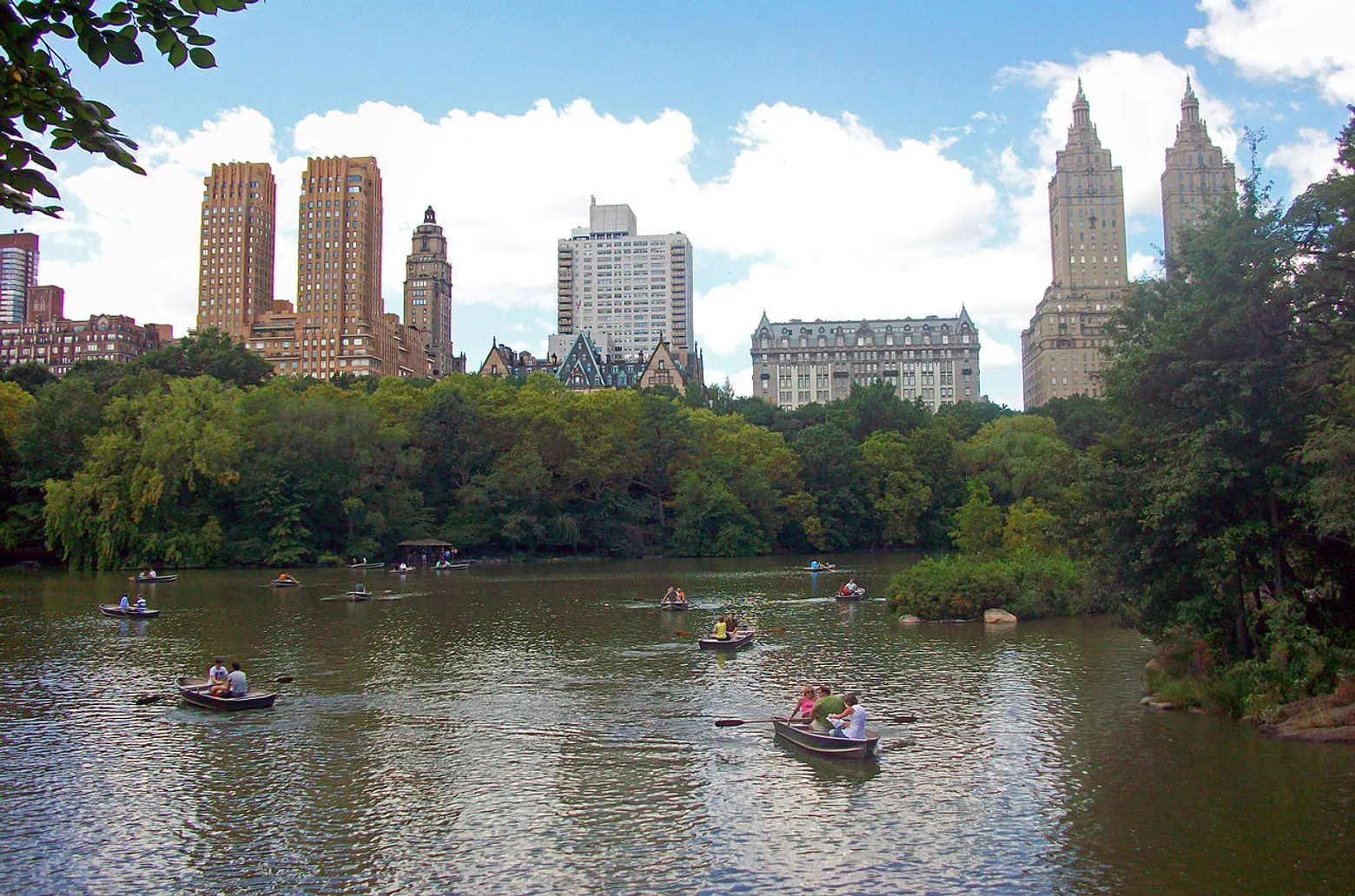 The Majestic second from the left and the San Remo to the far right; photo by Daniel Chase via Wikimedia Commons
The Majestic second from the left and the San Remo to the far right; photo by Daniel Chase via Wikimedia Commons
And while we’re talking about picturesque vistas, the New York Times holds that “Central Park West, more than any other Manhattan Street, was influenced by the Art Deco movement.” Here, the Deco building boom kicked off in 1929 and was a short but intense flurry of residential construction that lasted through 1930 since developers wanted to get in ahead of the 8th Avenue IND (now the A train) that runs up Central Park West opening in 1932. As a result, the whole street is a deco tableau of ziggurats and towers. Some of the most iconic silhouettes are the Eldorado, the Majestic, the San Remo, and the Century. It’s easy enough to just walk up the park and look at these beautiful buildings, but you can also take a guided tour of them through the Municipal Art Society, who often host a Central Park West Art Deco walking tour led by historian Anthony W. Robins.
8. New Amsterdam Theater
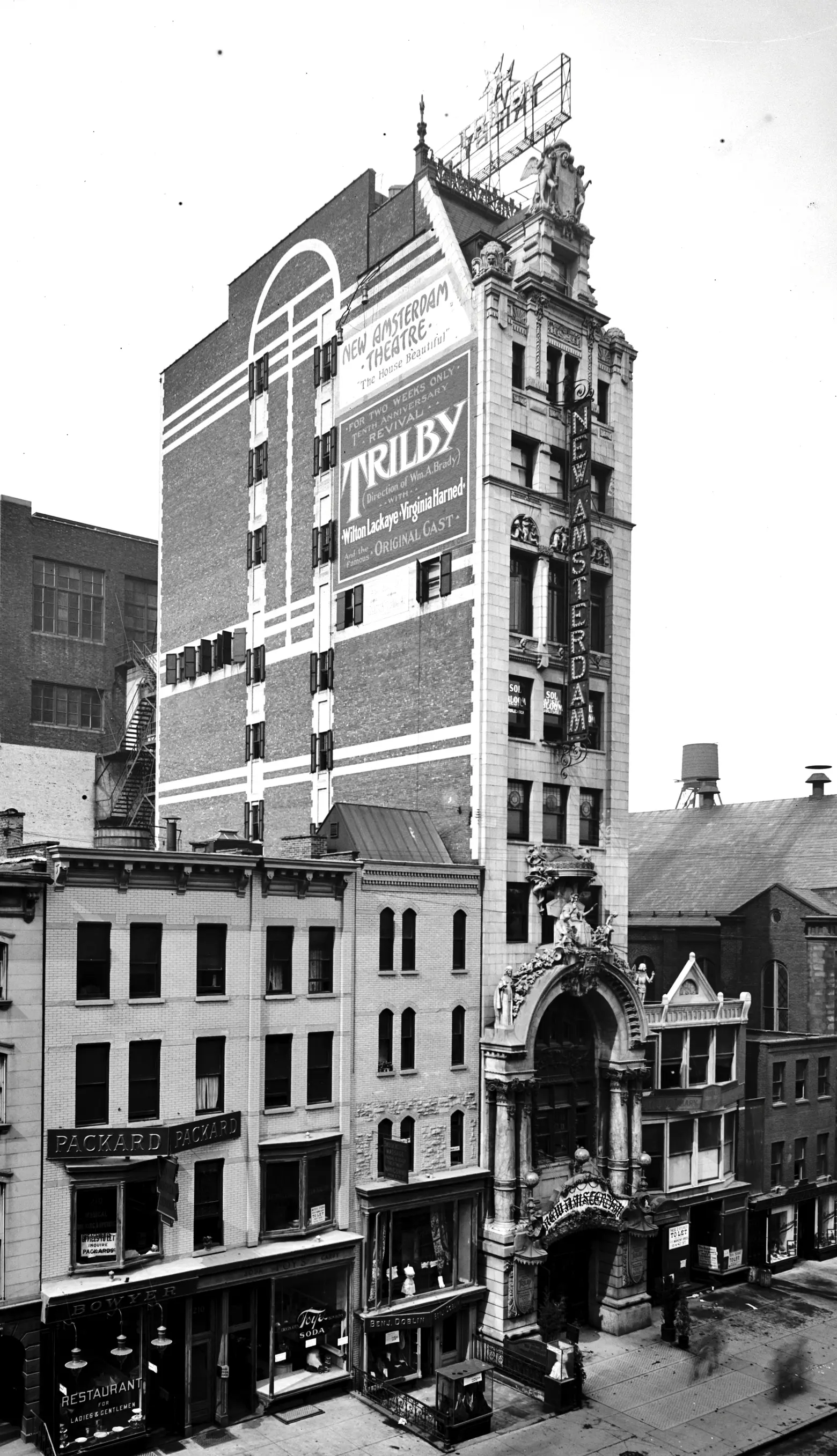 New Amsterdam Theater, ca. 1905, cropped by Beyond My Ken via Wikimedia Commons
New Amsterdam Theater, ca. 1905, cropped by Beyond My Ken via Wikimedia Commons
The New Amsterdam Theater at 214 West 42nd Street was built in 1903 with an ornate Beaux-Arts facade and equally lavish Art Nouveau interior designed specifically for its inaugural production of A Midsummer Night’s Dream. At the time, it was the largest theater in the world with 1,702 seats and earned the nickname “The House Beautiful” for its gorgeous architecture.
The theater was home to the Ziegfeld Follies, easily the most famous theatrical revue of the 1920s, known for their opulent sets and costumes. The Follies were in residence at the theater from 1913-1927, and Florenz Ziegfeld maintained an office in the theater. At the same time, he operated a night-club on the roof, a popular addition for many theaters and venues throughout the city at the time, which served well-heeled New Yorkers. At the New Amsterdam, the rooftop served as a backdrop for more scandalous productions.
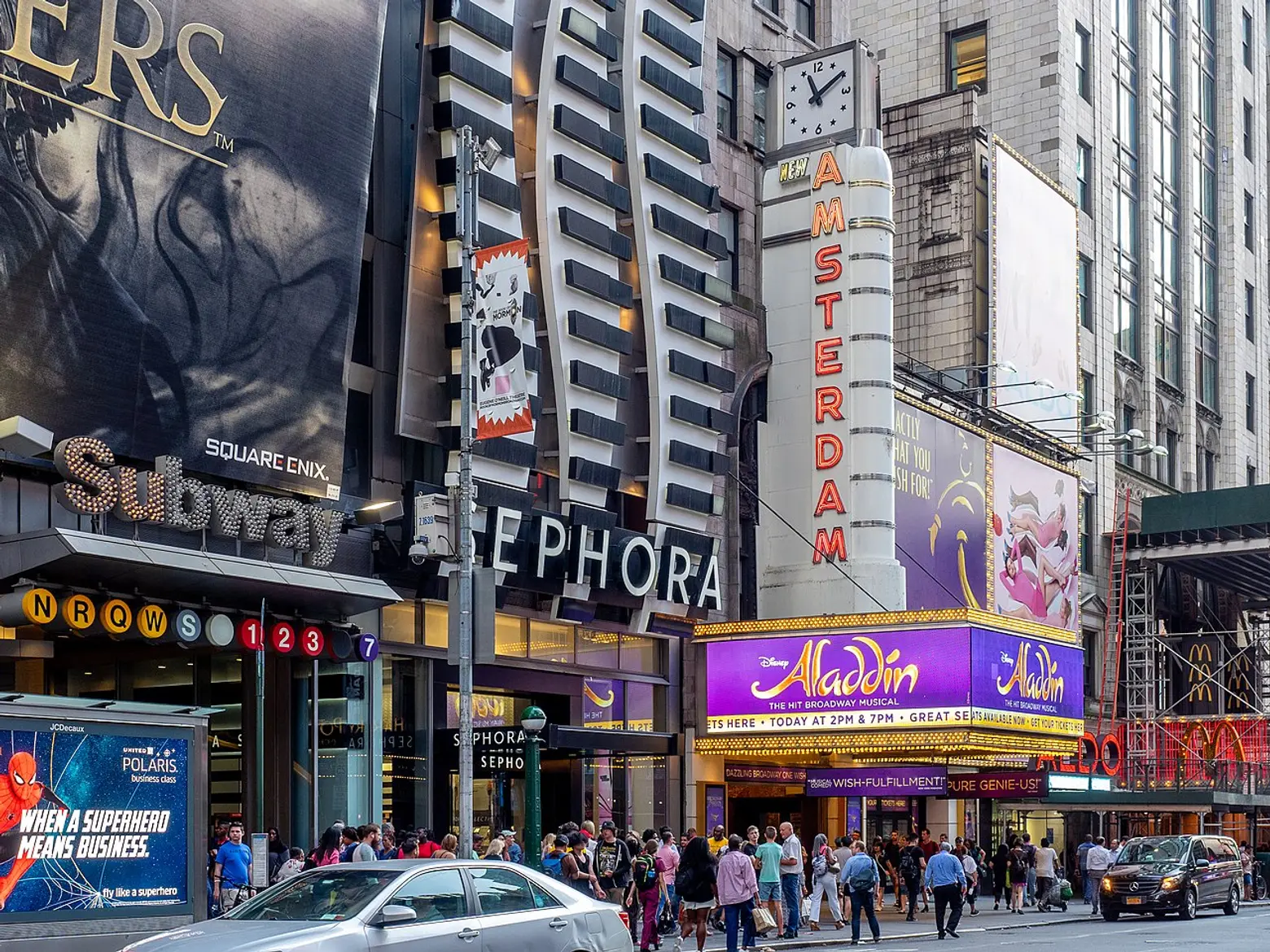 The New Amsterdam Theater today, photo by Ajay Suresh via Wikimedia Commons
The New Amsterdam Theater today, photo by Ajay Suresh via Wikimedia Commons
During the Depression, the theater fell into disrepair, but it was purchased by the Walt Disney Company in 1993, who then embarked on a thoughtful restoration of the building interiors. These days, the roof garden no longer exists, but the landmarked theater still stands and welcomes audiences as one of the three oldest surviving theaters on Broadway. Right now, it’s home to the current production of Aladdin.
9. The Alhambra
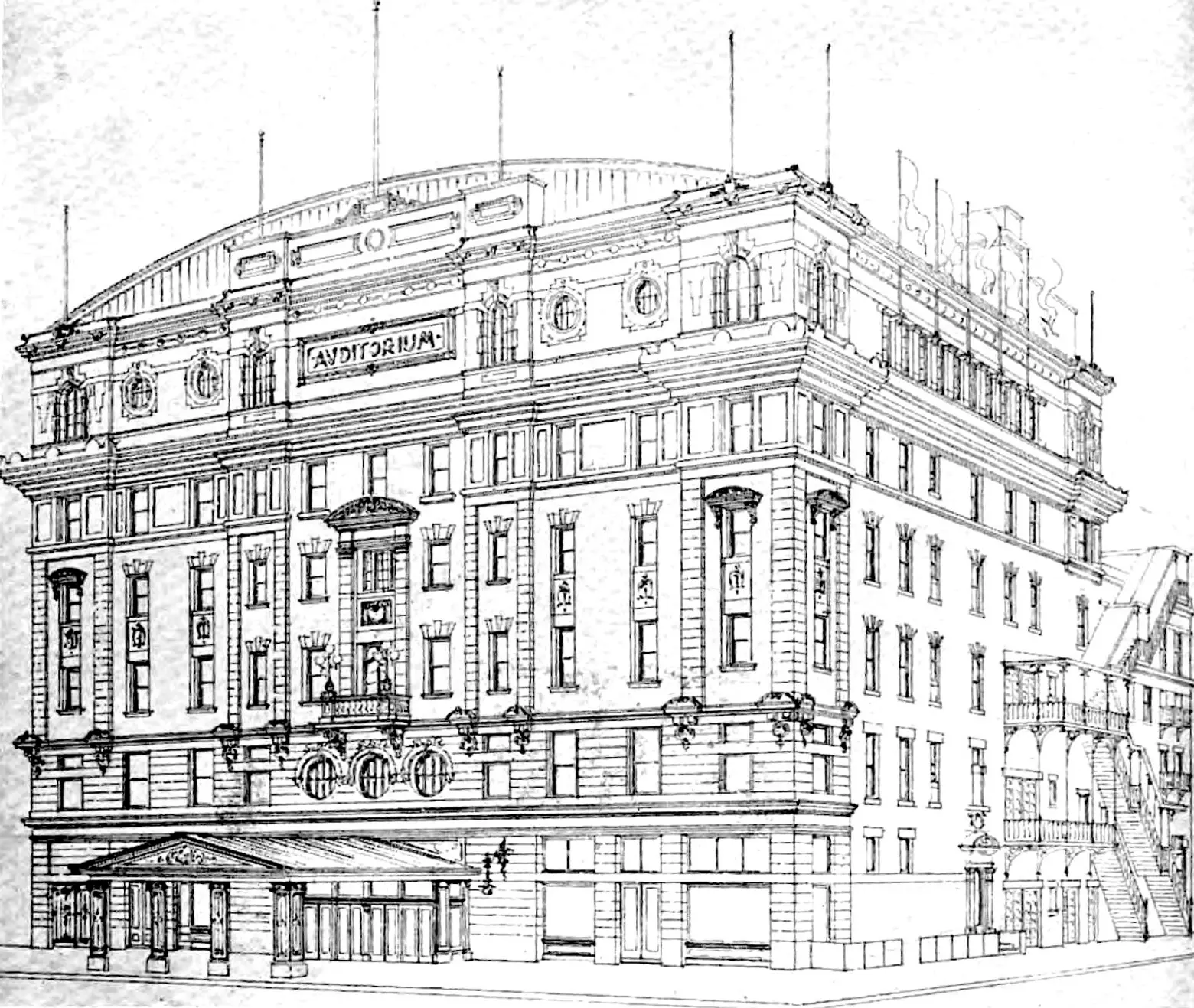 A 1904 drawing of the Alhambra from Architects’ and Builders’ Magazine, via Wikimedia Commons
A 1904 drawing of the Alhambra from Architects’ and Builders’ Magazine, via Wikimedia Commons
One of the most defining elements of the 1920s in NYC was the Harlem Renaissance. Sadly, many of the great Harlem clubs where much of this music (especially jazz), dance, poetry, and more were born have been demolished or completely repurposed (the Cotton Club, the Savoy Ballroom, and the Lafayette Theatre, to name a few). But one space remains that the public can still access. The Alhambra Ballroom opened in 1903 as a vaudeville movie theater, but in 1926, it opened an upstairs ballroom that became famous for hosting the likes of Jelly Roll Morton and Bessie Smith and for the fact that Billie Holiday worked here as a young waitress. During this time, there was a three-for-one show that included a movie, a cabaret, and a dramatic performance. Today, the Alhambra Ballroom is an event and wedding reception venue.
10. Coney Island
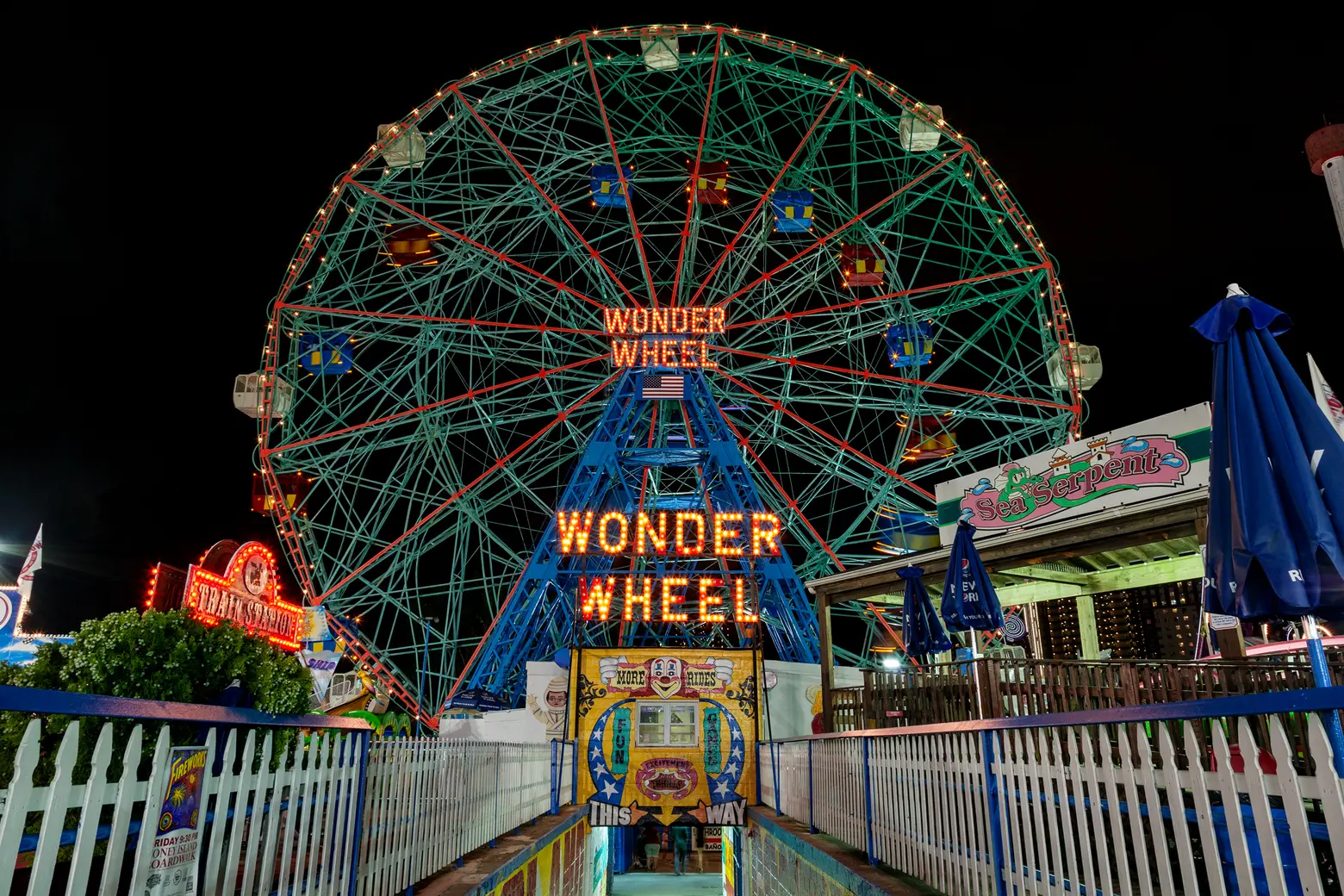 The Wonder Wheel © James and Karla Murray
The Wonder Wheel © James and Karla Murray
Though Coney Island had already begun its transformation into an amusement mecca, some of its biggest development happened in the 1920s when the subway connection to Manhattan was constructed. Coney Island became known as the “Nickel Empire” for the fact that you could get there for just five cents, and it became a playground for those hard at work all day during the roaring ’20s. Deno’s Wonder Wheel opened in 1920, Riegelmann Boardwalk in 1923, and the Cyclone roller coaster in 1927. All three of these still exist today. Deno’s Wonder Wheel, the 150-foot-tall Ferris Wheel, welcomes more than 200,000 guests each season; the Boardwalk was landmarked in 2018; and the Cyclone wooden roller coaster is still delighting riders as one of the oldest operating amusement rides in the country.
+++
RELATED:
- 20 fascinating photos of New York City in the 1920s
- Before Repeal Day ended Prohibition in 1933: Speakeasies and medicinal whiskey were all the rage
- Interactive Website Lets You Listen to New York City in the Roaring ’20s
